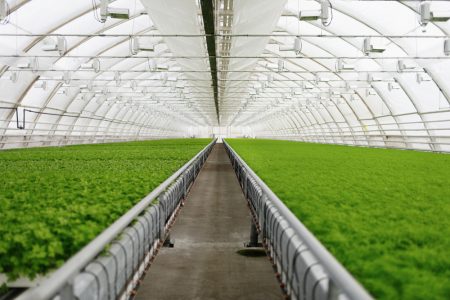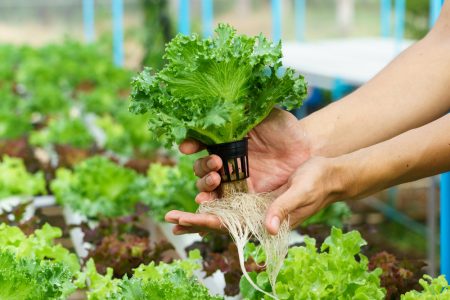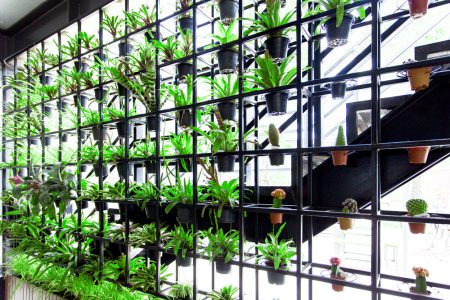December 12, 2018 – The latest guest blogger contribution comes from Katherine Began, currently a Director at Polycase, a manufacturer of enclosures for the electronics industry. Katherine is a recent graduate of Babson College where she studied Computational and Mathematical Finance. She turns that analytical skill to the subject of growing food in new ways and in new places and what it means in addressing food security.
Six Technology Trends in Farming This Year
Agricultural technology is undergoing some dramatic changes these days, and it’s not happening out in the cornfield. Rather, farmers, scientists, and developers are heading indoors to explore new ways to grow and deliver food to the masses. Their efforts are changing the face of the farm through the introduction of game-changing technology. In this posting we feature six that are happening in 2018.
1. Artificial Intelligence (AI) and Machine Learning
Experts estimate that 25 to 50% of farms are in the process or planning to invest in precision farming, applying digital technology to agricultural practices to boost crop yields. AI, related automation, and innovative monitoring devices housed in waterproof enclosures are designed to improve the way a farmer operates for tasks such as:
- Plant seeding and spacing
- Growth management
- Water disbursement
- Energy conservation
- Grafting and harvesting
- Plant packaging and preparation
Companies like Climate Corporation have developed digital agriculture tools complete with drones, cameras, and sensors to monitor the growth and health of crops in both small greenhouses as well as larger indoor facilities the size of small fields. The tracking technology produces a variety of reports on environmental conditions, plant life and overall growth progress.

2. Plant Genomics
Farmers are trading in overalls for white coats as they enter the world of genomics, a field that is fine-tuning the crops they grow. Advancements in plant genomics are designed to create higher yields, to enhance the taste of produce, and to grow plants with additional nutrients.
The loosening of state and federal regulations on cannabis growers has opened the door for more experimentation, as growers develop beneficial and more reliable marijuana strains. Genomics is also allowing for the miniaturization of crops, essential to increase yields within confined spaces.

3. Harvest Strategies During Peak Nutrient Growth
Microsoft, the software giant, is now going into farming. The company has on-site hydroponic farming facilities in the Pacific Northwest where it is experimenting with a wide range of technologies such as analysis software, onboard cameras, hydroponic towers, and targeted lighting. Microsoft’s agricultural specialists are working to optimize the development of a broad spectrum of food crops. One particular example has the company producing from a number of small sites 6,350 kilograms (14,000 pounds) of lettuce annually.
Microsoft is developing tools for farmers to track growth data, weather conditions, customer transactions, and the total number of food orders to predict how much a farmer should grow over the course of one season. So far their predictions are 90% accurate. What this means is that nearly everything the farmers plant is being consumed with little in the way of waste by season’s end.
4. Food Tracking to Reduce Recalls
The E. coli strain attack that triggered the recent recall of romaine lettuce in the United States and Canada accelerated the need for more advanced tracking and tracing of an assortment of food crops. While the technology to monitor plant growth is making immense strides, there remains more to be done to track how plants are handled during harvesting and shipping to trace sourced of mass contamination.
In a recent Consumer Reports online editorial it states, “It could be difficult for consumers to determine where the romaine they purchase is from, which is why they believe it’s best to avoid the lettuce altogether.” Consumers cannot be expected to trace lettuce in their salad served at a restaurant to a particular grower or location. The result is a blanket ruling from organizations like the FDA in the U.S. to avoid all romaine lettuce until further notice. The fallout of this announcement has been interesting with supermarkets removing all packaged salads and heads of romaine and other lettuces from their shelves.
Such scenarios create nightmares for farmers as well as food distributors and grocers as millions of dollars are spent and wasted because it is impossible to pinpoint the source of the health risk. That’s why developers are designing smart technology that utilizes genetic, molecular, or radioisotope tracking to trace and assess the health of food crops as they move through the supply chain from the field to grocers’ shelves. With this type of technology the food industry will be able to save billions of dollars.
5. Vertical Farming in the Urban Backyard
Vertical farming has come to urban areas. The concept isn’t new but growers’ ability to refine methodologies is turning the practice into a regular occurrence. The challenge for business owners involves creating a sustainable business model while keeping down the cost of overheads.
Companies such as AeroFarms and Bowery have engineered large-scale vertical farms in the exurbs. By using data science, AeroFarms produces crops without the need for sunlight or soil. Their moisture-driven indoor farms provide all the nutrients plants need to grow with absolute precision without sacrificing the plants’ nutrient value in the process. A key benefit of these vertical farms is that they grow food in a safer environment, protected from unstable weather patterns and natural disasters that can impact outdoor farms. And once indoor vertical farming is perfected it means it can be taken anywhere even into space.

6. Agritechture: The Next Big Thing
Based in Sweden, Plantagon’s holistic approach to indoor farming has led to the creation of a new term Agritechture, a combination of agriculture, technology, and architecture. Owner and CEO Owe Pettersson has built what he calls a food factory to produce massive amounts of fresh produce with minimal space and minimal water within a facility designed for the plants.
Pettersson’s goal is to deliver a wide range of organically-grown crops in a reduced carbon footprint by addressing water waste, energy efficiency, lighting efficiency, space, and marketability. Although the Plantagon indoor model is still being perfected, it is well along to becoming a standard by which others can measure their indoor agricultural practices.
The Farms, They Are a-Changing
As indoor farming becomes more visible it will continue to change the face of agriculture. Farmers face the challenges of climate change. Cities are looking at ways to source locally grown produce to cut down on transportation greenhouse gas emissions. Food service companies and restaurants are heeding the request by their customers to buy and be served food that is less carbon-intensive, and healthier. For farmers, it means rethinking their business by embracing these new technologies. And it likely means that the face of farming as the 21st century unfolds will be far different from what we have seen in the past.















